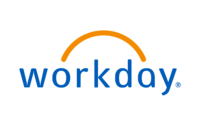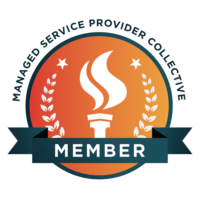Video Blog: UKG Pro Optimization Projects
Through UKG Pro, NeoSystems provides Payroll Administration and Tax Management, Compliance, Benefits Management, Open Enrollment, Recruiting, and On-Boarding as well as property, skills, and certification tracking – all through a cloud-based manager & employee self-service platform. Contact our team of experts today to learn more about our comprehensive UKG Pro consulting & support services.
Transcript
Don Carnevale: Hello, and welcome to the latest episode of our NeoSystems UKG Pro video blog. I’m Don Carnevale, Director of Corporate Marketing, and today I am joined by Gregory Giancola, Senior Manager of UKG Pro Consulting Services.
Gregory, welcome!
Gregory Giancola: Hey Don! Good to be back!
Don: Thanks!
So today we’ll be discussing some common observations we’ve been hearing from UKG Pro customers after they’ve been using the product for a while.
So Gregory, what are some of the trends you’re hearing from clients that have been live in the product for six to 12 months?
Gregory: Really good question, Don.
So some of the trends that we’re seeing are now that they’ve been using the product for six to 12 months, organizations are really now taking a step back and saying what is working and what is not working. They’re sort of saying their own self-evaluations and looking at things that may be working really well – i.e. workflows, benefit enrollment, open enrollment – or they might be looking at other things that are not going well – workflows because there’s been a merger and acquisition process or they thought that at the time of going live they were going to roll it out within two to three months and other business priorities and other business objectives have come u and so they were not able to roll it out in a very timely fashion.
Some of the other trends that we’re seeing is change management – the teams that were once in place during the launch and during the activation of this new product may not be there anymore. It may be because they’ve moved on to other projects, they’ve moved onto other areas within the organization, or they may have left the organization altogether. And so when that occurs, you kind of lose some of that innate knowledge and if it doesn’t get effectively transferred to one individual or another, and so what we’re seeing right now is a need for optimization services. This is something that NeoSystems is very strong in and that we’re able to help with.
Don: Great!
So when you engage with a client on a UKG Pro optimization project, what does a typical project look like?
Gregory: Sure – first off, no project is ever typical. From a consulting perspective, we like to think all projects are very similar, but everything is different and we custom our approach to meet that business need or to meet the client’s objectives.
So one of the first questions we started asking is, is “what is it that you are looking to solve here?” – is there an immediate need, is there something that is broken, or are you hearing from your internal avenues that there is something wrong, something that is off that is starting this callus. We work with your organizations, we identify which modules do you have within the UKG suite and is it all modules you want us to look at or are there specific modules – Recruiting, Onboarding, Benefits, Compensation Management, Core – that are more problematic, that you want more scrutiny over.
Organizations have come to us and said, “You know what, we don’t know what we don’t know, and we want to look at the entire breadth of the products that we have purchased and implemented.” Other times organizations have come to us with very strategic needs and we’ve helped them on those very specific needs, whether it be focused on a payroll aspect, a workflow aspect, an integration aspect, things of that nature.
So to answer your question, we look at the totality and we derive an agenda. Sometimes the agenda is a three to four-day process. Prior to the pandemic, we would always come on-site and meet with the very large or small project teams, depending on the employer’s case. But then we have discovery sessions where we’re going through an interview process and we’re asking what’s working, what’s not working, well help us understand your business processes, why are you doing it this way when the system needs to perform in this fashion
And we’re having this dialogue, but at the same time, we’re also documenting these issues, the best practices, and we’re putting together a very large analysis document that we will share with the client after our evaluation process. This document is a really good document because it serves as “here’s the point in time where we did this evaluation” and three, four years, the organization can go back and look and see some of those enhancements we have made. Other times organizations want it to be “okay we now have these 20 items while our budget only permits us to tackle in the upcoming year two but now we have a gameplan on how we can budget more effectively moving forward to get those enhancements.”
And so our approach is, and anytime that we’re working with clients, our approach is always, we want to form a very strong partnership. They’re relying on us to be the trusted advisor, to possibly be that independent third-party vendor, to really help ensure they are maximizing and getting that return on investment from their initial investment of the product.
Don: That’s a great point, Gregory. You know, the value that we’re able to provide for the customer, is always something we hear about. Can you share any anecdotal stories of when an optimization project has really made a positive impact on a client’s business?
Gregory: Sure! It’s kind of hard for me to narrow down all the success stories but there are a few that come to mind.
We were working with a very large retail, in the central portion of the U.S. They were a long-term adaptor of UKG, they went live with the product many many years ago. I think when we started working with them, they had launched the product back in 2011. And so in 2011, there were a lot of unique needs and challenges that they had to put into the system and so they used that dreaded “c” word. There were a lot of customizations, there were a lot of sequel statements, stored procedures that were unique to that organization, but over time, a couple of issues ran in. The people that actually implemented those changes and those sequel statements and sequel jobs, are no longer with the organization. The product itself has evolved so that the items that they had that were unique to them, are now actually common features that every one of us end-users is now allowed to use. So one of the major successes was helping them uncouple all of these unique customizations and making them now be able to use, without the customizations, the stored logic, the standard functionality that’s delivered to all clients, within their environment. So we were able to help them uncouple and move forward using the standard functionality in the system. So that’s one really big success that we’ve had.
There are multiple others, with other organizations from a workflow perspective to an integration perspective, but also documenting processes. A lot of times organizations don’t have their processes documented, from what HR does on a day-to-day basis to what Payroll does on a per-pay basis, right? So we’ve helped organizations develop those standard operating procedures for those organizations through these processes. So it really comes down to listening to what are those main objectives that the organization wants to achieve first, from an optimization standpoint. And then we sit down with those organizations and develop a strategic approach.
Don: Alright, that’s great! Thanks, Gregory, for your insight today. Ladies and gentlemen, please join us for our next video blog which will be coming very soon. Thanks and have a great day!
Gregory: Thanks, Don! Take care!












